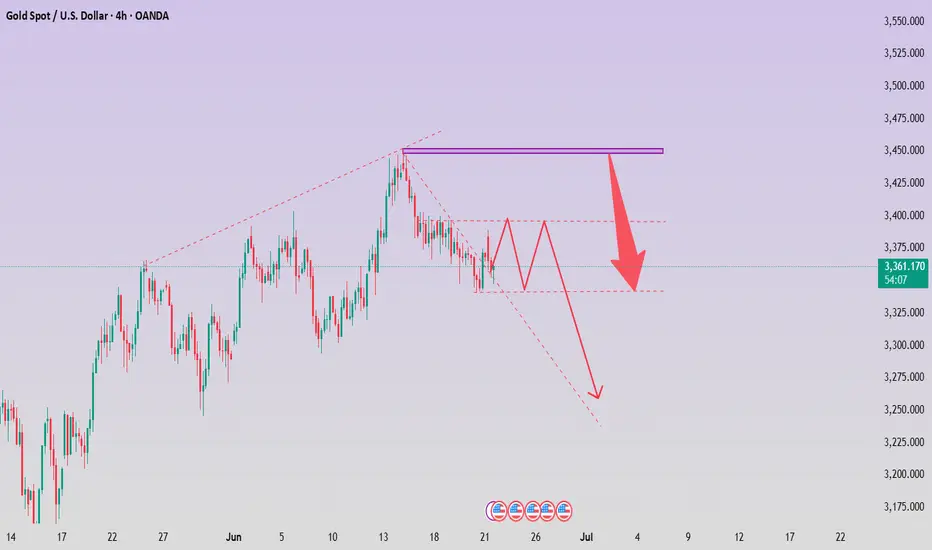📣 Macroeconomic data and central bank policies
1. Iran launched a large-scale missile attack on Israel: This morning, Iran launched about 27 to 30 ballistic missiles at Israel, targeting Tel Aviv, Haifa and Ben-Gurion International Airport. Israel's "Hammer" air defense system intercepted multiple incoming missiles, but still caused about 20 to 86 injuries, and some residential houses and infrastructure were damaged. Subsequently, the Israeli Air Force launched a retaliatory strike on military targets in western Iran, destroying two Iranian F-5 fighters and multiple missile launchers and military bases. The large-scale military conflict between the two sides further exacerbated tensions in the Middle East.
2. Iran plans to block the Strait of Hormuz, a major oil route in the Middle East: After the United States bombed Iran's nuclear facilities, the Iranian parliament immediately approved the closure of the Strait of Hormuz, and is currently awaiting approval from the highest authority. The Strait of Hormuz is known as the mouthpiece of oil. About a quarter of the world's seaborne crude oil trade passes through this place, and the oil exported by the Gulf countries through the strait accounts for 20%-25% of the world's total oil output. Once the Strait of Hormuz is blocked, the global oil supply will be severely impacted, triggering violent fluctuations in the energy market. This will not only exacerbate inflation expectations, but also make the economic outlook more uncertain. In this case, gold, as an important tool to combat inflation and economic uncertainty, will significantly increase its attractiveness, which may trigger a large number of investors to buy, thereby driving up gold prices.
3. The Fed maintains interest rates unchanged, and internal differences increase: In the early morning of June 19, Beijing time, the Federal Reserve announced that it would maintain the target range of the federal funds rate at 4.25%-4.5%, which is the fourth consecutive month that it has maintained this interest rate level. In this statement, the unemployment rate was slightly adjusted. Although the uncertainty of the economic outlook has been reduced, it is still at a high level. The dot plot shows that the Federal Reserve maintains its forecast of two interest rate cuts this year, but has raised the median forecast for the interest rate in 2026. Judging from the attitude of officials, the number of people who support two rate cuts this year is basically the same as those who support maintaining the current interest rate, which indicates that the differences within the Fed on the direction of monetary policy are increasing.
🎈Technical factors
Support and resistance From the technical chart, gold currently forms a double bottom support at 3340 in the hourly cycle, showing that this position has a certain support strength. If the gold price can hold the 3340-3350 first-line support in the next 15 days, it is expected to rebound on this basis. The short-term resistance above is 3385-3390, which is the previous trading concentration area. If gold can break through this resistance level, the long volume will really start to exert force and look further to a higher position. If the gold price falls below 3340, the key support level, it may trigger further selling, and the bottom may test $2941.
Gold price trend forecast and operation suggestions for the next 15 days:
Based on the above factors, there are several possibilities for the gold price trend in the next 15 days:
Optimistic outlook (probability 40%)
If geopolitical conflicts further escalate or US economic data, such as consumer confidence, are not as expected, leading to further strengthening of the Fed's interest rate cut expectations, gold prices are expected to stabilize and rebound around $3340-3350, and retest the previous high of $3450-3470. In terms of operation, investors can buy on dips when the gold price falls back to the support level, set a reasonable stop loss, and look at the resistance level.
Neutral scenario (probability 50%)
The price remains in the range of $3350-3385, waiting for the Fed's policy signals and macroeconomic data to guide the direction. In this case, investors can adopt a high-sell-low-buy operation strategy, buy at the bottom of the range, and short at the top of the range, strictly control positions and stop losses, and avoid large losses due to emotional fluctuations.
Pessimistic scenario (10% probability)
If the US economic data is strong, indicating stable economic growth, or the geopolitical risks suddenly ease, and the market risk aversion sentiment cools down significantly, the gold price may fall below the key support level of $3,340 and seek support at $2,941. At this time, investors should stop losses in their long orders in time, and even consider shorting at highs, but pay attention to market changes and control risks.
Overall, the gold market is full of uncertainty in the next 15 years. When investing in gold, investors must pay close attention to changes in macroeconomic data, central bank policies and geopolitical situations, combine technical analysis, reasonably control positions, set stop losses, and make investment decisions with a profit-taking spirit.
Disclaimer
The information and publications are not meant to be, and do not constitute, financial, investment, trading, or other types of advice or recommendations supplied or endorsed by TradingView. Read more in the Terms of Use.
Disclaimer
The information and publications are not meant to be, and do not constitute, financial, investment, trading, or other types of advice or recommendations supplied or endorsed by TradingView. Read more in the Terms of Use.
